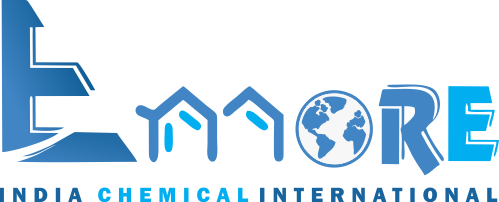Hydrochloric acid /Muriatic/ acid Spirits of salt Where to buy in chennai
Hydrochloric acid is a colorless inorganic chemical system with the formula H2O:HCl. Hydrochloric acid has a distinctive pungent smell. It is mainly produced as a precursor to vinyl chloride for PVC. It is classified as strongly acidic and can attack the skin over a wide composition range, since the hydrogen chloride practically dissociates completely in solution.
Other names
Muriatic acid
Spirits of salt
Hydronium chloride
Chlorhydric Acid
Hydrochloric acid is the simplest chlorine-based acid system containing water. It is a solution of hydrogen chloride and water, and a variety of other chemical species, including hydronium and chloride ions. It is an important chemical reagent and industrial chemical, used primarily in the production of polyvinyl chloride for plastic. In households, diluted hydrochloric acid is often used as a descaling agent. In the food industry, hydrochloric acid used as a food additive and in the production of gelatin. Hydrochloric acid is also used in leather processing.
Hydrochloric acid was discovered by the alchemist Jabir ibn Hayyan around the year 800 AD. Hydrochloric acid was historically called acidum salis, muriatic acid, and spirits of salt because it was produced from rock salt and "green vitriol" (Iron(II) sulfate) (by Basilius Valentinus in the 15th century) and later from the chemically similar common salt and sulfuric acid (by Johann Rudolph Glauber in the 17th century). Free hydrochloric acid was first formally described in the 16th century by Libavius. Later, it was used by chemists such as Glauber, Priestley, and Davy in their scientific research. Unless pressurized or cooled, hydrochloric acid will turn into a gas if there is around 60% or less of water. Hydrochloric acid is also known as hydronium chloride.
Hydrochloric acid has many uses. It is used in the production of chlorides, fertilizers, and dyes, in electroplating, and in the photographic, textile, and rubber industries. Hydrochloric acid is corrosive to the eyes, skin, and mucous membranes. Acute (short-term) inhalation exposure may cause eye, nose, and respiratory tract irritation and inflammation and pulmonary edema in humans. Acute oral exposure may cause corrosion of the mucous membranes, esophagus, and stomach and dermal contact may produce severe burns, ulceration, and scarring in humans. Chronic (long-term) occupational exposure to hydrochloric acid has been reported to cause gastritis, chronic bronchitis, dermatitis, and photosensitization in workers. Prolonged exposure to low concentrations may also cause dental discoloration and erosion. EPA has not classified hydrochloric acid for carcinogenicity.
Industry Uses
Bleaching agents
CBI
Cleaning Compound
Dyes
Finishing agents
Functional fluids (closed systems)
Intermediates
Laboratory chemicals
Lubricants and lubricant additives
Many industrial uses of hydrochloric acid. Not known exact downstream uses by
customers of distributor.
Miscellaneous uses: Lab chemical, reagent, processing aid
Not known or reasonably ascertainable
OIlfield Inhibitor
Oxidizing/reducing agents
Pigments
Plating agents and surface treating agents
Process regulators
Processing aids, not otherwise listed
Processing aids, specific to petroleum production
Solids separation agents.
Solvents (for cleaning and degreasing)
Surface active agents
Water Treatment pH Adjustment and Industrial Cleaning
acid cleaner
industrial manufacturing and water treatment chemical
inorganic chemical processing
material is sold to broker for various distribution activities.
pH Control for Water
pH Control in Process
pH Treated for Deepwell Disposal
Consumer Uses
Acid etching metals
Adhesives and sealants
Agricultural products (non-pesticidal)
Building/construction materials not covered elsewhere
CBI
Cleaning and furnishing care products
Down hole fracking chemistry
Electrical and electronic products
Etching for surface preparation
Fabric, textile, and leather products not covered elsewhere
Fuels and related products
Industrial Cleaning
Industrial manufacturing and industrial water treatment
Ink, toner, and colorant products
Laboratory use
Laundry and dishwashing products
Metal products not covered elsewhere
Non-TSCA use
Not known or reasonably ascertainable
OIlfield Inhibitor
Paints and coatings
Paper products
Personal care products
Plastic and rubber products not covered elsewhere
Reactant
Used for quenching steel and neutralization.
Water treatment products
used in products which are used as cleaners in plating processes or used as cleaners for a variety of applications for surface treatments, examples of final uses are automotive and machinery.
